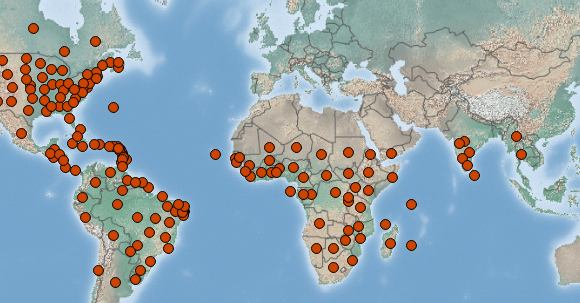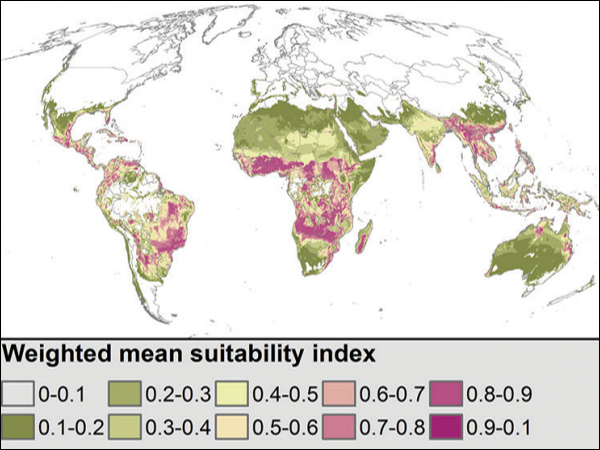First Africa, now Asia: Fall Armyworm is becoming a world-wide epidemic
The Fall Armyworm (FAW, Latin: Spodoptera frugiperda) has been taunting farmers in the Americas for centuries. The FAW has over 80 different crops on its diet, but prefers maize. Just three years ago the FAW spread to West-Africa, most likely via air traffic. By today, the FAW has been reported throughout Sub-Saharan Africa and poses a huge threat to food security and the livelihood of farmers. The economic damage is estimated to be several billion USD. Unfortunately, this is not the end. Just recently the FAW has also invaded Asia: India, Myanmar, Sri Lanka, Thailand, and Yemen now have to face a new pest. The map below shows the current extent of the FAW.

Reportings of the Fall Armyworm (Source: CABI)
Which countries are next? A recent study by Early et al., 2018 investigated the world-wide climatologic suitability for the FAW. In short, the climate should neither be too cold nor too dry. The map below shows areas which are suitable for sustaining year-round FAW populations. Given how fast the FAW has spread over the African continent in the past three years, it seems likely that it will spread further into Asia and possibly even Australia or Europe.

Climatologic suitability for sustaining FAW populations year-round. Purple colors indicate high suitability. Source: Early et al., 2018. https://doi.org/10.3897/neobiota.40.28165
If the FAW is to spread to suitable locations in Europe, across the Mediterranean, or Morocco, we could face a similar situation as in North-America right now. There, regions in Texas and Florida are warm enough to sustain FAW populations year-round. Further up north the winters are too cold, but with the arrival of spring it gets warm enough for the FAW to migrate northwards. By the end of summer, the FAW can get as far as Canada, damaging crops along the way.
Weather Impact has joined forces with Satelligence to battle the Fall Armyworm. Using a combination of weather and satellite data we are developing an early warning system for the Fall Armyworm. Right now, farmers often only notice the FAW when the damage has been done and yield loss is inevitable. Our early warning system could inform them about the risk in advance, enabling them to take preventive actions and avert harvest losses.

